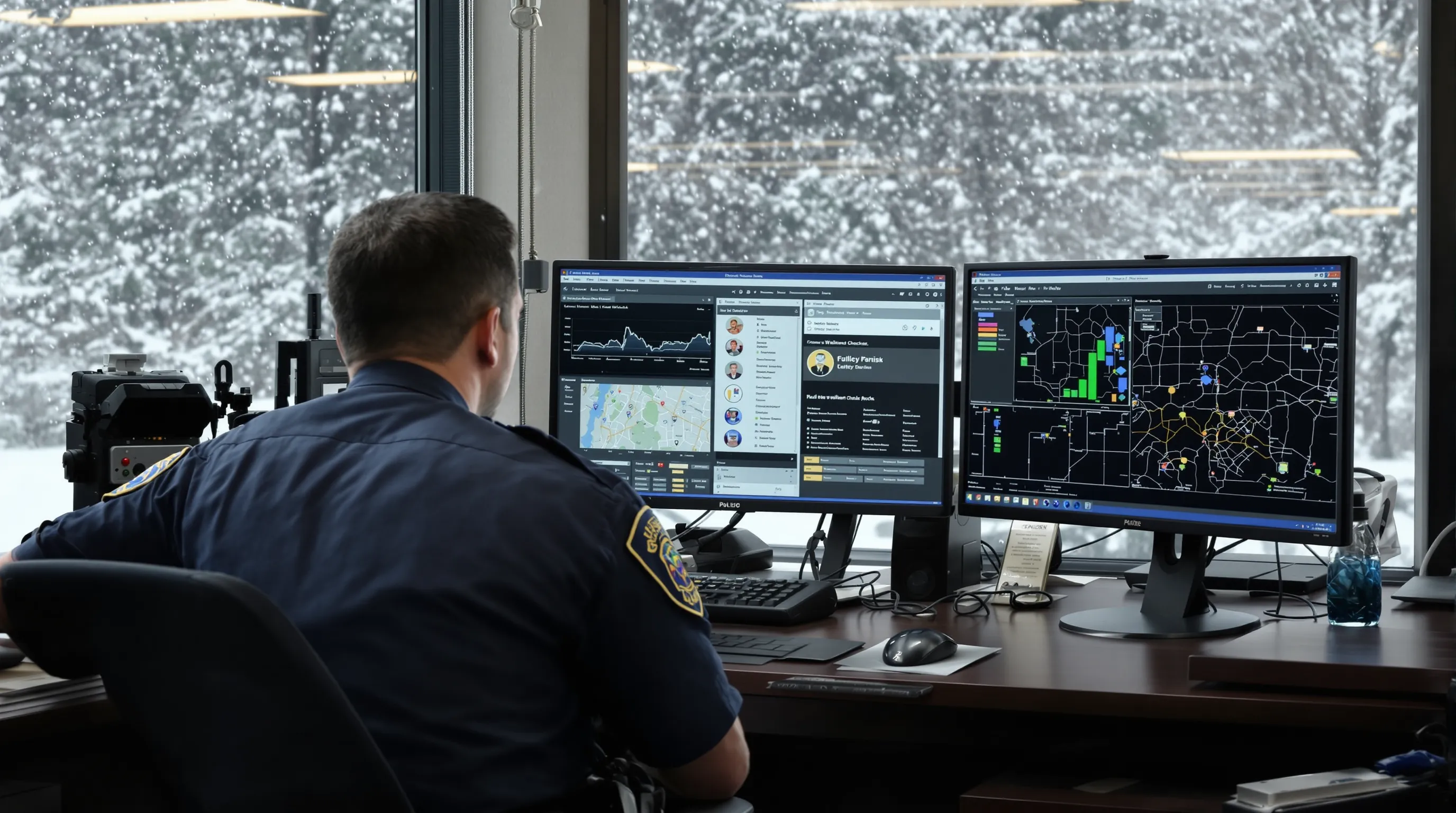Frigid nights strain more than heating grids—they strain the capacity of police departments tasked with ensuring every resident remains safe. In many jurisdictions, the first cold snap of winter triggers hundreds of “welfare check” calls from worried relatives or neighbors. When patrol officers are already responding to weather-related traffic accidents, the added workload can overwhelm resources and extend response times.
Automated check-in technology solves much of the logistical puzzle, allowing agencies to launch wide-scale wellness campaigns without sacrificing frontline readiness. Below is a practical playbook for police leaders exploring automated daily check-ins as part of their cold-weather operations.
The Winter Risk Profile: Why Speed Matters
- According to the U.S. Centers for Disease Control and Prevention, hypothermia claims an average of 1,300 American lives each year, and nearly half of those deaths involve people over 65.
- Seniors living alone are especially vulnerable because deteriorating mobility, prescription side-effects, or cognitive decline can delay help-seeking behavior.
- Power outages, iced-over steps, and home-heating malfunctions escalate during winter storms, turning routine days into life-threatening scenarios.
The operational takeaway is clear: early contact prevents late-stage emergencies. A short automated call that confirms “all is well” can reduce unnecessary dispatches while flagging genuine distress within minutes.
Traditional Wellness Checks: Important but Resource-Heavy
- Door-to-door visits build trust but often require two officers per contact for safety.
- Manual phone trees depend on volunteer availability and accurate spreadsheets.
- Press statements encouraging self-registration seldom reach isolated seniors who lack internet access.
When temperatures plunge below freezing, the cumulative time spent on these approaches can exceed available manpower. Automated check-ins compress the entire process to seconds per resident, letting sworn personnel focus on higher-risk incidents.
How Automated Check-Ins Reinvent Police-Led Campaigns
| Function | Traditional Approach | Automated Check-In Advantage |
|---|---|---|
| Initial Outreach | Patrol knocks or dispatch calls | Bulk phone & SMS enrollment in minutes |
| Daily Confirmation | Repeat calls by staff | Residents press 1 # to check-in; logs instantly update |
| Escalation Workflow | Dispatcher attempts callbacks | Configurable alerts route to designated care group, then patrol |
| Documentation | Hand-written field cards | Real-time, exportable reports for agency records |
Beyond efficiency, automated systems such as ConfirmOk store data on encrypted servers and require no special equipment—residents use their existing landline or mobile phone.

Blueprint for a Cold-Weather Wellness Campaign
1. Pre-Season Planning
- Identify priority populations through senior services, utility companies, and 911 call history.
- Partner with local media and faith groups to promote opt-in registration.
- Confer with legal counsel to draft a brief consent form covering data usage and emergency protocols.
2. System Configuration
- Import resident phone numbers into ConfirmOk’s secure portal.
- Create unlimited care-group tiers (e.g., family, neighbor volunteer, patrol supervisor).
- Set default call windows—many departments choose 08:00 for morning checks and 20:00 for evening callbacks after a missed confirmation.
3. Launch & Monitoring
- Issue a public Nixle or CodeRED alert explaining the campaign and how to recognize the automated call.
- Designate a civilian crime-analysis clerk to review missed check-ins and escalate according to policy.
- Generate weekly reports to spot patterns—multiple failed check-ins might indicate phone service issues rather than distress.
4. Post-Season Review
- Compare winter EMS calls for “lift assist” or “welfare check” against the prior year.
- Survey participants; many seniors report reduced anxiety knowing police will be notified automatically.
- Present findings at city council budget sessions to secure ongoing funding.
Success Stories From the Field
The IACP Technology Conference (May 2024) featured a panel where midwestern departments shared early outcomes:
- A 32-officer agency in Minnesota enrolled 611 residents before January storms, logging 4,200 successful daily confirmations and identifying 27 true emergencies—all resolved within 30 minutes of alert.
- A coastal New Jersey municipality cut non-emergency welfare dispatches by 43 % compared with the previous winter, freeing two patrol units per shift.
While numbers vary by jurisdiction, every agency cited improved community relations and cost savings on overtime.
Cost-Benefit Snapshot
| Category | Manual Checks (per 1,000 residents) | Automated Checks with ConfirmOk |
|---|---|---|
| Officer Hours | ~170 hrs/week | <10 hrs/week (oversight only) |
| Average Overtime Expense | $7,500/month | Negligible |
| Response Time to Verified Emergencies | 45 min (mean) | 15 min (mean) |
Data modeled on agencies serving populations under 50,000; actual results depend on staffing and geography.
Overcoming Common Implementation Hurdles
Resident Skepticism
Live enrollment booths at senior centers, supported by officers in uniform, build trust quickly.
Language Barriers
The system supports multilingual prompts; departments typically record English and Spanish options during setup.
Integration With CAD/RMS
Automated email or SMS alerts can be routed to a dedicated CAD address, creating an incident record without manual entry.

Next Steps for Police Leaders
Winter will arrive whether budgets are finalized or not. By piloting an automated wellness campaign now, agencies can quantify impact before the harshest weather sets in. ConfirmOk offers:
- Automated calls with a simple “press 1 # to check-in” interface.
- SMS check-in alternatives for mobile-only households.
- Unlimited care-group members so family, volunteers, and dispatch can receive simultaneous alerts.
- Custom reporting that satisfies accreditation and grant-funding documentation.
Visit ConfirmOk to schedule a live demo or request a 30-day evaluation license. A few clicks today could prevent the next cold-weather tragedy—and keep your officers available for true emergencies.

